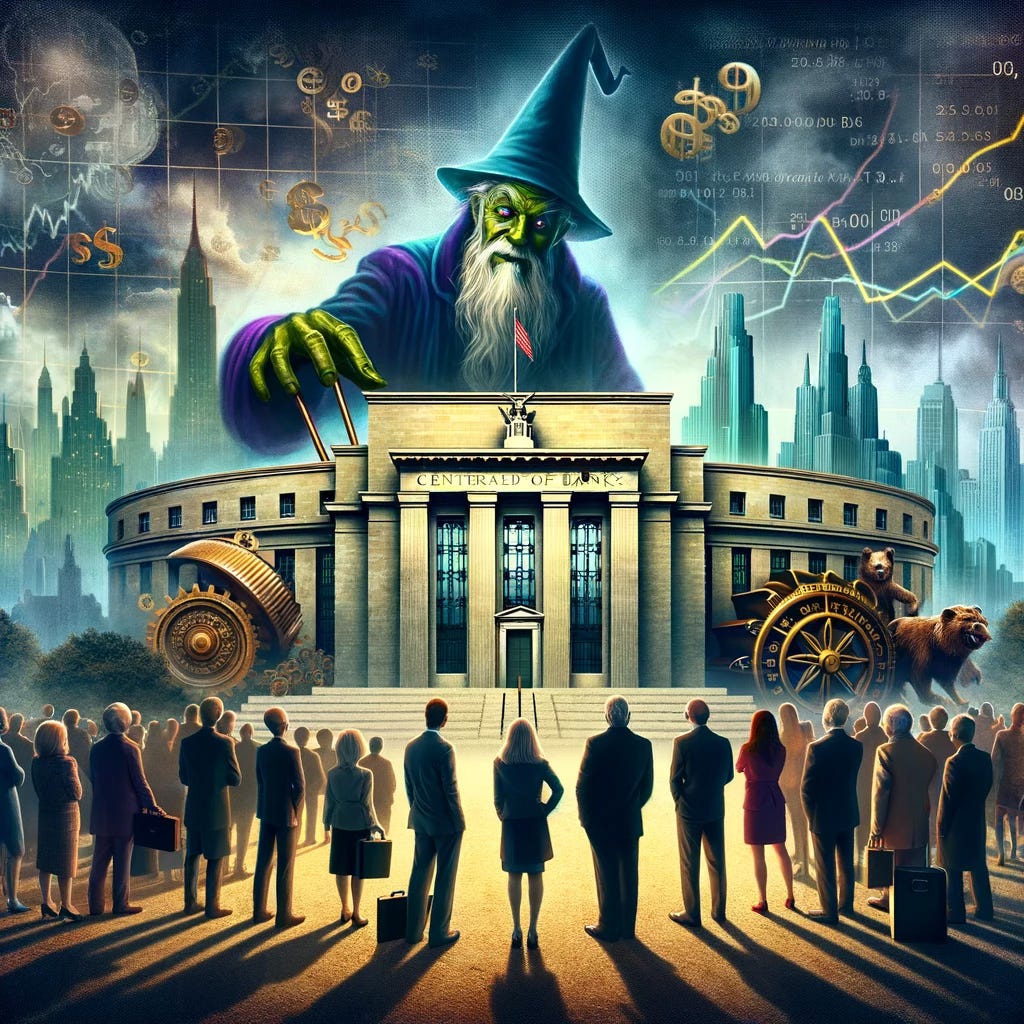The Invisible Hand That Rocks the Cradle
Questioning the Untouchable Status of Central Banks
In the hallowed halls of global finance, central banks hold a position of near-sacred reverence. Tasked with steering the colossal ship of the economy, these institutions are often viewed as the wise sages of the financial world, immune to the follies of mere mortals. But what if this veneration is misplaced? What if, beneath the veneer of infallibility, central banks are not the saviors of our economy but potential architects of its downfall?
Let's embark on a thought experiment, akin to pulling the curtain back in "The Wizard of Oz," to examine the omnipotence of central banks. Picture them as the all-powerful Oz, dictating monetary policy from behind a veil of economic jargon and complex models. The public, like Dorothy and her companions, gazes in awe, rarely questioning the wisdom of these financial wizards.
Central banks, with their ability to print money, manipulate interest rates, and intervene in financial markets, wield a power that is almost god-like. Yet, with great power should come great scrutiny. History is littered with episodes where unchecked power leads to unforeseen consequences. Remember the subprime mortgage crisis of 2008? Central banks played a starring role in that financial tragedy, pumping cheap money into the system and inflating a housing bubble that, when burst, brought the world economy to its knees.
Let's sprinkle in some statistics to paint a picture. Consider the Federal Reserve's balance sheet, which ballooned from less than $1 trillion in 2008 to over $8 trillion by 2021. This meteoric rise is not just a number; it's a testament to the unprecedented scale of monetary intervention in the economy. Such actions raise questions about the long-term implications of these gargantuan financial experiments.
Critics argue that central banks, in their quest to smooth out economic cycles, may actually be fuelling the fire of financial instability. By keeping interest rates artificially low, they encourage excessive risk-taking and create asset bubbles. It's akin to a doctor prescribing ever-increasing doses of painkillers to mask the symptoms of an underlying disease, rather than addressing the root cause.
Furthermore, the veil of independence surrounding central banks is often questioned. While theoretically autonomous, the lines between government policy and central banking can become blurred. Political pressures can, and often do, influence monetary policy decisions. This intertwining of money and politics is a recipe for controversy, raising the specter of inflationary policies that erode the value of money and punish savers.
It's high time we question the orthodoxy that central banks are the infallible guardians of our economic galaxy. By placing them on a pedestal, shielded from criticism, we risk ignoring the lessons of history. Just as a healthy democracy relies on the scrutiny of its leaders, a robust economy needs a critical examination of its central pillars, including the role and power of central banks. After all, in the grand chessboard of economic policy, even kings can be checked.


